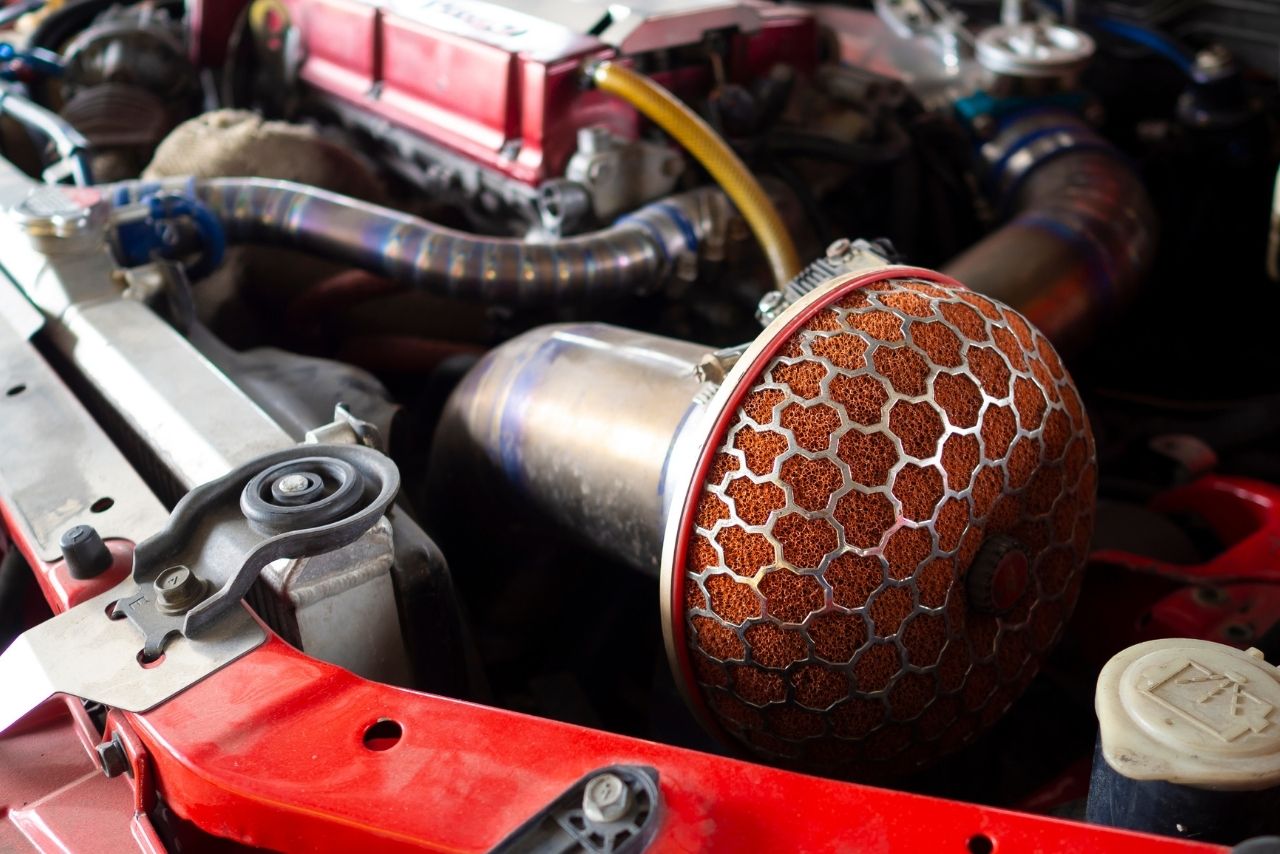Does A Cold Air Intake Increase Mpg or Improve Fuel Economy? Cold air intake systems have been a popular modification among car enthusiasts for years.
But do they actually improve fuel economy and increase MPG? The answer is yes, to some extent.
Cold air intakes help reduce your vehicle’s fuel consumption by optimizing the combustion process.
By delivering cooler air to the engine, these systems promote better combustion, allowing more energy to be produced while consuming less fuel.
As a result, you can expect a slight improvement in both MPG (miles per gallon) and overall fuel economy.
While cold air intake systems can enhance performance and efficiency, it’s important to note that the impact on your vehicle’s fuel consumption may only be marginal.
On average, you can anticipate an increase of just a few percent in terms of MPG and overall fuel economy.
Does A Cold Air Intake Increase Mpg or Improve Fuel Economy?
A cold air intake can increase fuel efficiency, but the amount of improvement will vary depending on the car and the type of cold air intake. In general, a cold air intake can improve fuel economy by 1-5%.
Table of contents
How Does a Cold Air Intake Improve Fuel Economy?
A cold air intake pulls in cooler air than the stock intake, which allows the engine to burn more fuel efficiently.
Cooler air is denser than warm air, so there are more oxygen molecules in a given volume of cooler air.
This means that the engine can burn more fuel for the same amount of air, which results in more power and better fuel economy.
What are the benefits & drawbacks of a cold air intake?
In addition to improving fuel economy, a cold air intake can also:
What we like
- Increase horsepower
- Improve throttle response
- Make the engine sound louder
What we don’t like
- A cold air intake can make the engine run hotter.
- A cold air intake can increase noise levels.
- A cold air intake can void your car’s warranty.
Whether or not a cold air intake is worth it depends on your individual needs and goals. If you’re looking for a way to improve your car’s fuel economy, then a cold air intake can be a good option.
However, if you’re not concerned about fuel economy, then a cold air intake may not be worth the investment.
Here are some things to consider when deciding whether or not to install a cold air intake:
If you’re considering installing a cold air intake, I recommend doing your research and talking to a qualified mechanic to see if it’s the right choice for you.
How Cold Air Intakes Work?
A cold air intake system is designed to replace the stock air intake system in a vehicle. It works by delivering cooler, denser air into the engine, which can result in improved performance and fuel efficiency. Here’s how it works:
Benefits of Improved Combustion:
Improving combustion in your vehicle can have several benefits, including increased fuel efficiency and improved overall performance. Here are the key advantages of achieving better combustion:
Lessened Environmental Impact: Better combustion reduces unburnt hydrocarbon emissions that contribute to smog formation. By maximizing fuel burn,* cold air intakes can help reduce harmful emissions released into the environment during driving operations.
In summary, optimizing combustion through installing a cold air intake offers multiple advantages: increased fuel economy, enhanced power output, reduced heat levels within the engine compartment, improved throttle response, and a lesser environmental impact.
By improving your vehicle’s combustion process, you can enjoy both economic and performance benefits while contributing to a greener environment.
Understanding MPG and Fuel Economy:

Factors that affect MPG and fuel economy include:
Cold air intake systems play a role in improving both MPG and fuel economy by:
The benefits of cold air intakes on mpg and fuel economy may vary depending on various factors including:
- Vehicle make/model/engine type
- Driving conditions (city vs highway)
- Individual driving habitsOverall, while cold air intake systems can improve mpg and enhance fuel economy by only a few percent, it is important to note that they are just one factor among many that contribute to overall vehicle efficiency.
Consider implementing other strategies like maintaining proper tire pressure,
using recommended motor oil grades, and practicing efficient driving techniques like gradual acceleration/braking to further optimize your vehicle’s mpg/efficiency.
Remember: every little improvement counts when it comes to saving money at the pump!
The Science Behind Cold Air Intakes:
| Benefits of Cold Air Intake Systems |
|---|
| – Improved airflow |
| – Increased horsepower |
| – Enhanced throttle response |
| – Potential increase in torque |
- While cold air intake systems have proven benefits for overall engine performance, it’s important to note that their impact on improving MPG or fuel economy is relatively modest – typically only increasing by a few percent.
By optimizing the amount of oxygen available during combustion and reducing heat-related inefficiencies, cold air intakes contribute towards maximizing energy extraction from each unit of consumed fuel.
However, other factors such as driving habits, vehicle maintenance, tire pressure, aerodynamics also play significant roles in determining overall fuel economy.
Comparing Different Cold Air Intake Systems:
When it comes to choosing the right cold air intake system for your vehicle, there are several factors you should consider. Here, we compare different systems based on their performance, ease of installation, and overall value:
- Performance: The primary goal of a cold air intake system is to improve your vehicle’s performance and fuel economy. Consider the following aspects when comparing different systems:
- Airflow: Look for systems that offer increased airflow capacity compared to stock intakes. A higher airflow allows more oxygen into the engine, resulting in improved combustion efficiency.
- Filtration: Opt for intakes with high-quality filters that effectively trap dust and debris while allowing maximum airflow. This ensures clean air reaches your engine without compromising its longevity.
- Ease of Installation: Choose a cold air intake system that is easy to install, especially if you plan on doing it yourself. Look for features like bolt-on designs or comprehensive installation instructions that simplify the process.
- Value: Consider both the initial cost and long-term benefits when evaluating different options:
- Price: Compare prices among various brands while considering their reputation for quality and reliability.
- Maintenance: Some cold air intake systems require regular filter cleaning or replacement. Factor in ongoing maintenance costs when determining overall value.
| Brand | Performance | Ease of Installation | Value |
|---|---|---|---|
| Brand A | Excellent | Easy | High |
| Brand B | Good | Moderate | Medium |
| Brand C | Average | Difficult | Low |
Remember that individual results may vary depending on factors such as driving habits, environmental conditions, and other modifications made to your vehicle.
Installing a Cold Air Intake in Your Vehicle:
When it comes to improving your vehicle’s fuel economy and increasing MPG, installing a cold air intake system can be a worthwhile upgrade. Here’s what you need to know about the installation process:
Remember that although installing a cold air intake may improve fuel economy slightly due to better combustion efficiency resulting from cooler air, the actual mileage increase may vary depending on driving habits and other factors.
However, it’s worth noting that a cold air intake can also enhance your vehicle’s performance by providing more power and better throttle response.
Tips for Maximizing Fuel Efficiency with a Cold Air Intake:

To get the most out of your cold air intake and improve fuel efficiency, here are some tips to consider:
By following these tips, you’ll be able to maximize the benefits of a cold air intake system when it comes to improving MPG (miles per gallon) and enhancing overall fuel economy in your vehicle.
Common Misconceptions about Cold Air Intakes and MPG:
When it comes to cold air intakes and their impact on MPG (miles per gallon) or fuel economy, there are a few common misconceptions that need to be clarified. Let’s take a closer look:
Exaggerated Claims by Manufacturers: Beware of exaggerated claims made by manufacturers regarding dramatic increases in MPG solely from using their specific brand of cold air intakes. While they may offer benefits over restrictive factory setups, realistic expectations should be set based on real-world feedback rather than marketing hype.
Maintenance and Care for your Cold Air Intake System:
To ensure optimal performance and longevity of your cold air intake system, it’s important to follow proper maintenance and care practices. Here are some key tips to keep in mind:
By following these maintenance practices, you can help prolong the lifespan of your cold air intake system while ensuring it continues delivering improved fuel economy benefits over time.
Conclusion and final thoughts 💭
Cold air intake systems have the potential to significantly impact a vehicle’s fuel efficiency.
By enabling better combustion and maximizing energy production while minimizing fuel consumption, these systems offer a promising solution for those looking to reduce their vehicle’s fuel expenses.
Although the increase in MPG and improvement in fuel economy brought by cold air intakes may be modest, even a few percent can make a noticeable difference over time.
As such, investing in a quality cold air intake system could prove beneficial for both your wallet and the environment.
By optimizing airflow and ensuring that your engine receives cooler, denser air, cold air intake systems play an active role in enhancing combustion efficiency. This results in more power generation from each unit of fuel consumed.
So if you’re seeking to maximize your vehicle’s gas mileage and improve its overall performance without significant modifications or alterations, incorporating a cold air intake system is certainly worth considering.
Remember, when it comes to achieving optimal fuel economy with increased MPG figures – every little bit counts!
Latest Posts:
- Can WD-40 Remove Scratches on Cars? (Hint: Yes, but…)
- Can You Use a Drill to Polish Your Car? (We Tried it Out!)
- Should You Cover Car Scratches With Stickers? (REVEALED!)
- Buick Service Stabilitrak: (Causes & 100% Guaranteed Fix!)
- Common Holden Trax Problems (Causes & 100% Proven Fixes!)
- Jeep Commander Transmission Over Temp: (Guaranteed Fix!)












Leave a Reply